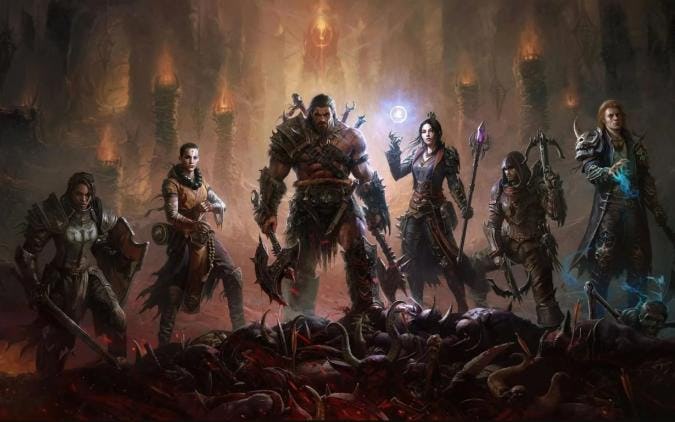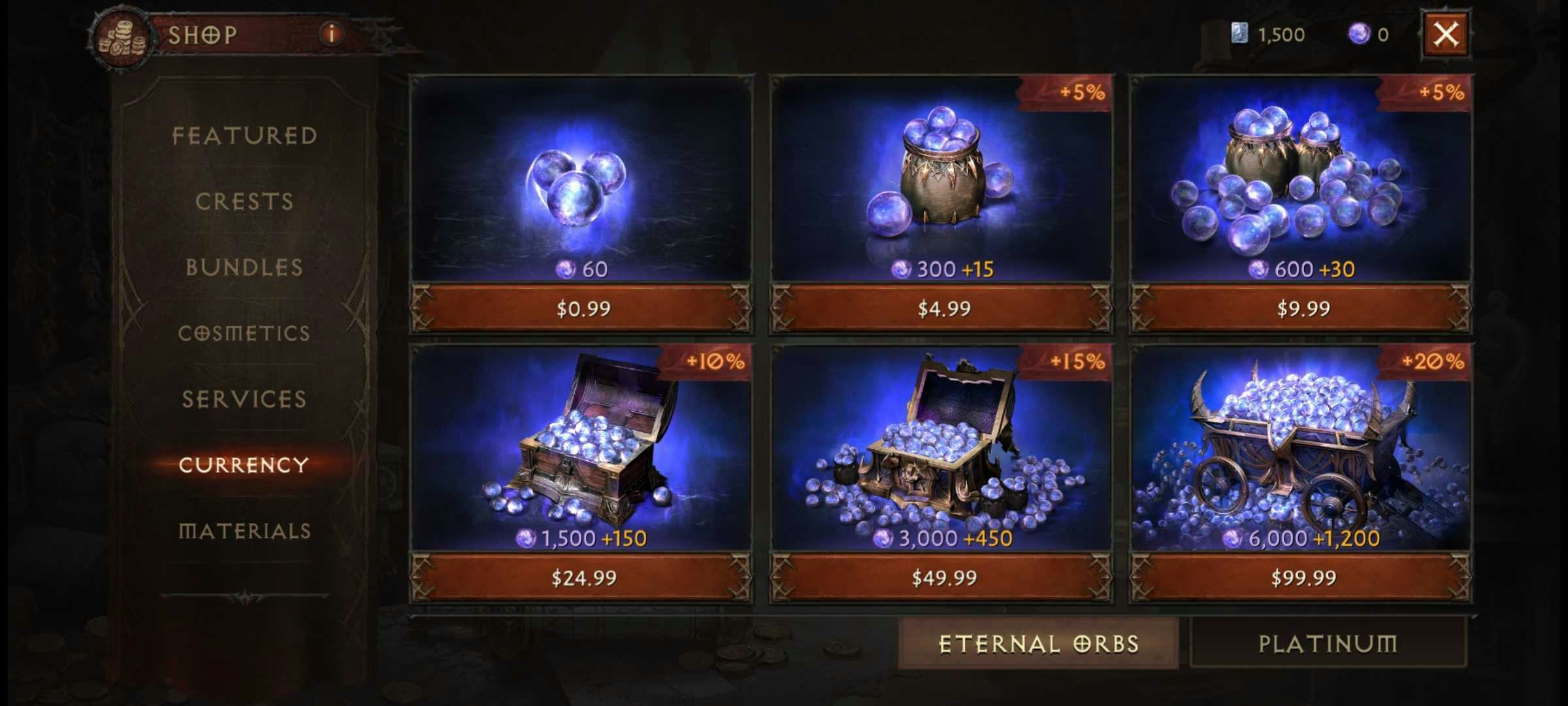
Diablo Immortal is a great game locked under a mountain of microtransactions.
When I first started up the tutorial, it dropped me into a nightmarish swamp where I slayed hordes of shambling enemies, collecting mounds of experience and loot. Once the tutorial was over, I continued to demolish anything with a health bar. Wolves in the Dark Wood, golems in the Library of Zoltan Kule, and bandits in the Shassar Sea — they all fell to my double crossbows. The gameplay kept me glued to my phone, constantly hunting for that next power spike or level up. But the constant pop-ups asking me to visit the store to spend real money quickly dissolved that bond.
Released on mobile and currently in beta on PC, Blizzard’s freemium title brings the devil back to life. Diablo Immortal has all the ingredients for a blockbuster smash: stupendous graphics, an immersive yet familiar story, and stellar in-game mechanics. But Blizzard’s all-too-transparent goal of locking progression behind a paywall — and the absurd amount of cash you need to spend to stay relevant in the end-game — makes this one of the most disappointing games of the past decade.
A Fresh Start

Ever since the first Diablo debuted in 1997, the franchise has followed the same formula. Starting out as a weakling, you travel through dungeons and slay monsters to get items and experience. As you grow stronger, you fight more powerful enemies and get better loot.
Diablo 3 came out in 2012 and remains one of the best-selling games of all time, with more than 30 million units sold for PC alone. Even after hundreds of hours, demolishing endless mobs still somehow feels fresh and rewarding. Diablo Immortal was first revealed at Blizzcon 2018 to a chorus of boos from mobile-wary fans. (One dismayed player asked the devs if the announcement was “an out-of-season April Fool’s joke.”) For a while, it was unclear if Blizzard would ever let the game out of the crypt.
With all of this overburdened baggage, I still tried to go into Diablo Immortal without preconceived notions. And in the beginning, I had an absolute blast. The controls on both PC and mobile work beautifully. On your smartphone, you can drag and drop icons to aim one of your four abilities, or you can connect a controller. On PC, it controls exactly like its predecessors, though your cursor can get lost and click on the wrong thing in the on-screen mayhem. With a good internet connection, there’s almost no lag, which is crucial for high-intensity fights.
Boss fights are frequent — sometimes in raids and others out on the open map — forcing me to team up with other players online. New enemies like the Black Rose appeared alongside series staples like the Skeleton King (now on a horse!) and the Butcher. The new bosses stack up well to the old, with splendid visual effects and well-choreographed fight patterns. It’s a good thing they’re fun, because you are going to have to fight them over and over to farm the right gear. And the rewards for doing so get worse the more you play.
An exercise in frustration

Once I hit level 40, I saw a noticeable drop-off in my character’s progression. Suddenly, it took days to climb up a few levels or get a powerful item. After you reach the level cap of 60, you’ll reach what Diablo has always been known for — the end-game. You can augment your stats in new ways by unlocking Iben Fahld’s Sanctum, equipping amulets, or joining one of two warring factions. New quests also open up, allowing you to continue the endless farm.
New Hell difficulties also open up, adding fresh boss encounters and new loot. There are loads of things to do and the well-defined game mechanics can really suck you in. But eventually, you’ll hit a wall and no longer be able to progress.
Experience you earn in the end-game goes toward Paragon levels, which allow you to increase your stats and gain new abilities on a skill tree. These make the game feel even more grindy, bottlenecking your progress so you feel more inclined to spend money. Paragon levels can require millions of experience points to progress, and many of the most diehard Diablo addicts are currently stuck in the mid-40s.
An unsavory transaction

Elder Rifts are Diablo Immortal’s main farming activity, similar to the Greater Rifts in Diablo 3. It’s pretty straightforward — you need to slaughter enough enemies to summon a powerful Guardian within a time limit. They can be completed for free, with a small chance to drop a powerful weapon. Alternatively, you can spend real world-money on Legendary Crests in an attempt to get Legendary Gems, which are needed to reach the strength cap. You cannot get the most powerful five-star versions of these gems any other way. (One streamer, Quin69, spent over $15,000 just to get one of them.)
Roughly 22 different currencies and materials are needed to craft or purchase all the items in the game. Some can be earned by farming. But others, like Legendary Crests, are mostly unavailable to low- or no-spend players. Players with deep pockets will always have a huge advantage in Diablo Immortal — and that’s far and away the worst thing about the game.
It also doesn’t help that the game puts hard limits on material farming without explicitly telling you. After you get six Legendary items in one day, the game throttles your rewards — unless you are willing to spend some hard-earned cash on Elder Rifts.
Microtransactions alone aren’t a dealbreaker for me — I’ve spent thousands of dollars on skins in League of Legends. But Diablo Immortal doesn’t limit spending to optional cosmetics — you need to pay in order to compete and grow. The result is an experience that feels extremely predatory and unethical.
Diablo Immortal could be an amazing game, which is why it’s so depressing to play. If you could level up and find rare items without feeling the cold grasp of the store window looming behind, then it could be your new mobile fascination. But instead, it will live on as a cautionary tale of utter scumbaggery.
4/10
Diablo Immortal is available on iOS, Android, and PC. Inverse reviewed the mobile and PC versions.







